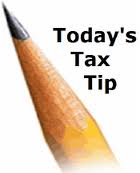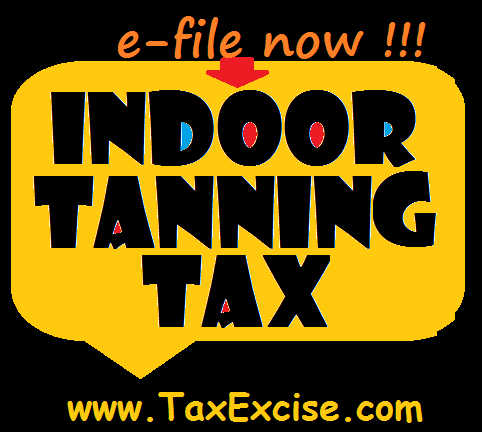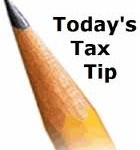Leaking Underground Storage Tank (LUST) Tax Refunds – How to claim refund using Form 8849
TaxExcise.com is a certified efile service provider for all Excise Tax forms. We support Form 8849 claims on excise taxes including Schedule 1,2,3,5,6 & 8.
Through www.TaxExcise.com LUST claim can be made to IRS.
What is LUST?
The LUST tax is a $.001 per gallon tax imposed on taxable fuels to fund the cleanup of leaking underground motor fuel storage tanks.
On Dec. 29, 2007, the President signed the Tax Technical Corrections Act of 2007. Section 6(d) of the Act amends Section 1362 of the Energy Policy Act of 2005 and Sections 4041, 4042, 4082 and 6430 of the Internal Revenue Code (IRC) to remove a double LUST excise tax that was previously imposed on dyed diesel fuel used in trains and fuels (other than Bunker C residual fuel oil) used on inland waterways, and to allow a refund of any second LUST tax paid. Additionally, the amendments exempt fuel used in foreign trade from the LUST tax and allow a refund of any LUST tax previously imposed on that use.
Due to amendments to the Tax Technical Corrections Act of 2007, some taxpayers are entitled to a LUST excise tax refund. Taxpayers eligible for a refund are encouraged to use Form 8849, Claim for Refund of Excise Taxes, to file a refund claim. No interest will be paid on LUST tax refunds.
Instructions for Completing Form 8849
Use www.TaxExcise.com to complete your LUST clams, also use the available efile service to claim it electronically.
LUST TAX REFUND claims on
Aviation fuel “Kerosene for use in aviation, LUST tax on foreign trade, the Credit Reference Number (CRN) 433.
Dyed diesel fuel used in trains and inland waterways, “LUST tax on dyed diesel fuel used in trains and inland waterways” and the CRN 434.
Mail Form 8849 and Schedule 6 to:
IRS prefer electronic method to do Excise Tax claims, still you want to do it over mail, use www.Taxexcise.com prepare your claim form 8849 return and mail it to
Internal Revenue Service
P.O. Box 312
Covington, KY 41012-0312
IRS’ preferred method for claiming the LUST tax refund is the use of Form 8849. Form 8849 will be the most timely and convenient. As an alternative to filing Form 8849 to claim a refund, taxpayers may claim a credit on their federal income tax return by using line 17 on Form 4136, Claim for Federal Tax Paid on Fuels.
Taxpayers Eligible to Claim a LUST Tax Refund Under the Provisions of the Tax Technical Corrections Act of 2007
Only taxpayers involved with the tax on fuel used in inland waterways, trains and aircraft engaged in foreign trade are eligible for the LUST tax refund.
For fuel used in aircraft in foreign trade: The ultimate purchaser unless it waives its right to the claim to the ultimate vendor under IRC Section 6427(l)(4)(C).
For fuel used in inland waterways: The person that paid the tax as the operator of the vessel in which the propulsion fuel was consumed.
For fuel used in trains: The operator of the train, unless the deliverer of the fuel paid the tax under Treasury Regulation Section 48.4082-4(b)(2)(ii).
The LUST tax imposed under IRC Section 4041(a)(1)(C)(ii) does not apply after Dec. 31, 2006.
Explanation of the Term “use in foreign trade”
Generally, use in foreign trade includes any use of an aircraft in a commercial international flight that leaves the United States (subject to the reciprocity rules of IRC 4221(e)(1)). Commercial aviation is any use of an aircraft in the business of transporting persons or property by air for compensation or hire.
Receipt of Refund
The IRS anticipates issuance of refunds within 20 days of receipt of Form 8849.
General Scenarios
If you own a taxable fuel terminal and in 2007 reported the LUST tax on Form 720, Quarterly Federal Excise Tax Return, under abstract 119, you are not entitled to the LUST tax refund because only one LUST tax was paid on your fuel.
If you used undyed diesel fuel in your train, you are not entitled to the LUST tax refund.
If you used undyed diesel fuel in your inland waterways vessel, you may be eligible but only if you paid the inland waterways tax of $0.201 per gallon.
If you used dyed diesel fuel in your inland waterways vessel to operate generators that are not part of the propulsion system of the vessel, you are not entitled to the LUST tax refund. This fuel use is excluded from the tax imposed by IRC Section 4042, so no double LUST tax would have been paid.
References/Related Topics
Excise Tax: www.irs.gov


 Starting July 1, 2010, many businesses offering tanning services must collect a 10 percent excise tax on the tanning services they provide. This excise tax requirement is part of the Affordable Care Act that was enacted in March 2010. Indoor Tanning tax has to be reported for the 1st Quarter of 2011 is due by May 2nd, 2011.
Starting July 1, 2010, many businesses offering tanning services must collect a 10 percent excise tax on the tanning services they provide. This excise tax requirement is part of the Affordable Care Act that was enacted in March 2010. Indoor Tanning tax has to be reported for the 1st Quarter of 2011 is due by May 2nd, 2011.
